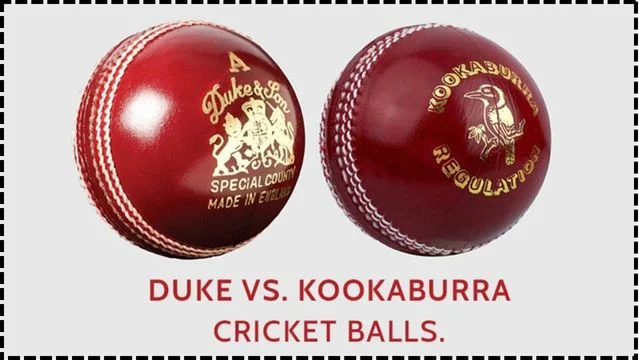When we think of cricket, a few iconic images come to mind a batsman’s elegant strokeplay, a bowler’s graceful action, and, of course, the unmistakable sound of leather meeting willow. At the heart of this quintessential sport lies the cricket ball, and one brand has left an indelible mark on this essential piece of equipment – Kookaburra. Among the many brands that manufacture cricket balls, Kookaburra stands out as a trusted and iconic name in the sport. In this article, we will delve into the history, innovation, and impact of Kookaburra cricket balls on the world of cricket.
The History of Kookaburra Cricket Ball
Kookaburra’s Humble Beginnings
Kookaburra Sport Pty Ltd, commonly known as Kookaburra, is an Australian sports equipment company that has become synonymous with cricket balls. Founded in 1890, Kookaburra initially started as a manufacturer of cricket bats. However, it wasn’t long before they ventured into the production of cricket balls, realizing the integral role they played in the game.
The name “Kookaburra” is inspired by the native Australian bird, the laughing kookaburra, known for its distinctive and loud call. This choice of name reflects the company’s Australian heritage and its commitment to producing high-quality cricket equipment that would make its mark on the world stage.
Early Days
In its early years, Kookaburra primarily produced cricket balls made from traditional materials like cork, twine, and leather. These balls were meticulously handcrafted, emphasizing durability and consistency in weight and size. As cricket gained popularity, Kookaburra cricket balls became a preferred choice for players in Australia and beyond.
Introduction of the Turf Ball
The 1940s marked a significant turning point in the history of Kookaburra cricket balls with the introduction of the “turf ball.” This innovative creation featured a stitched, quilted seam and a unique combination of materials, including cork and rubber. The turf ball quickly gained recognition for its durability and consistent performance on different playing surfaces.
The White Ball Era
With the emergence of limited-overs cricket and the advent of One Day Internationals (ODIs) in the 1960s, Kookaburra adapted to the changing demands of the sport. The company introduced the white cricket ball, which was easier to spot under floodlights and in day-night matches. This innovation was pivotal in the evolution of limited-overs cricket, adding a new dimension to the game and making it more viewer-friendly.
The Pink Revolution
In the 21st century, Kookaburra cricket ball made another groundbreaking innovation by introducing the pink ball for day-night Test matches. This development aimed to revive interest in Test cricket and extend the playing hours into the evening, attracting larger crowds and television audiences. The pink ball, designed to offer better visibility under artificial lights, became a game-changer, helping sustain the popularity of Test cricket.
Kookaburra Cricket Ball Weight and Price
The Importance of Weight
The weight of a cricket ball is a critical factor that can greatly influence a match’s outcome. Kookaburra cricket ball maintain consistency in weight through meticulous control to ensure fairness and a level playing field. The standard weight for a Kookaburra cricket ball is approximately 155.9-163 grams.
Affordable Quality
One of the remarkable aspects of Kookaburra cricket balls is their affordability despite their high quality. Unlike some other premium cricket ball brands, Kookaburra offers a balance between performance and price, making them accessible to cricketers at all levels of the game. The average price of a Kookaburra cricket ball ranges from $15 to $60, depending on the variant and quality.
The Impact of Kookaburra Cricket Ball on the Sport
International Recognition
Kookaburra cricket balls have been used in international cricket matches for decades. Their reputation for quality and consistency has led to widespread adoption by cricket boards around the world. In many ways, Kookaburra cricket balls have become synonymous with the sport itself.
Performance Enhancement
The innovative features of Kookaburra cricket balls, such as their seam design and pronounced pronounced stitching, have contributed to their exceptional performance. Bowlers appreciate the grip and swing they can achieve with these balls, while batsmen have to adapt to the consistent bounce and movement. As a result, Kookaburra cricket balls have played a significant role in shaping the modern game of cricket.
Sustainability Initiatives
In recent years, Kookaburra has also focused on sustainability, aligning its practices with environmental concerns. They have introduced eco-friendly cricket balls that are biodegradable and made from sustainable materials, reflecting the company’s commitment to reducing its ecological footprint.
Kookaburra vs. Duke: The Key Differences
In the world of cricket, people often inquire about the distinctions between Duke and Kookaburra cricket balls. While both brands are highly regarded, they exhibit unique traits. Duke cricket balls, for instance, are famed for pronounced seam movement, notably in English conditions, while Kookaburra balls provide reliable bounce and seam movement.
Where Are Kookaburra Cricket Ball Made?
Kookaburra cricket balls are proudly made in Australia. The company’s manufacturing facilities are located in Melbourne, where they maintain strict quality control measures to ensure that every ball that bears the Kookaburra name meets their exacting standards.
Conclusion
In conclusion, Kookaburra cricket balls have a rich history, marked by innovation and a commitment to quality. Their impact on the sport of cricket is undeniable, from international matches to local club games. Thanks to its consistent weight, affordable pricing, and commitment to sustainability. Kookaburra continues to dominate the cricketing world as a formidable force.


